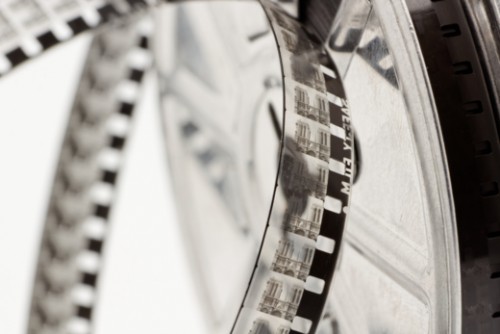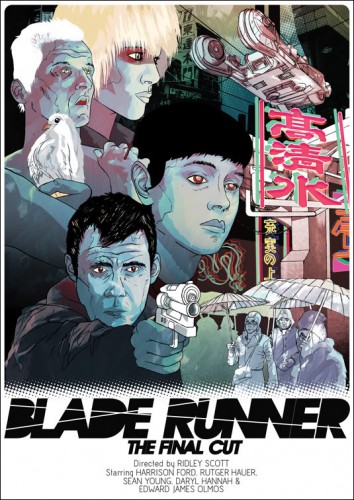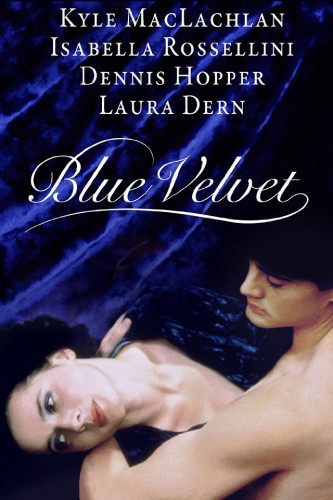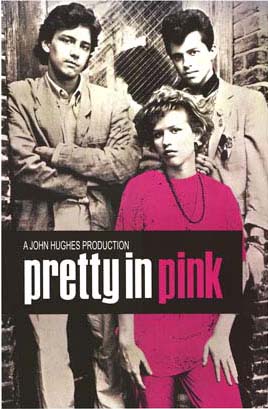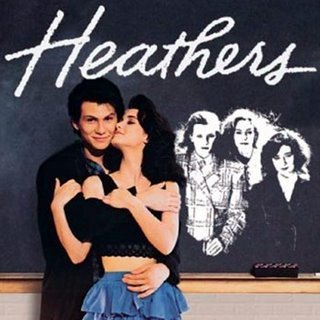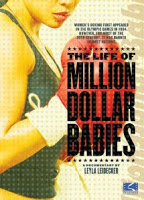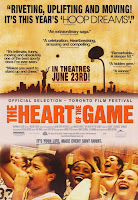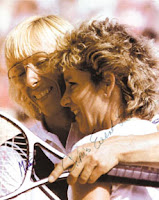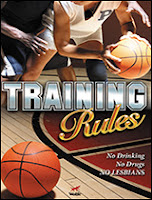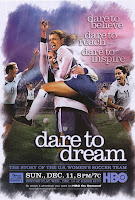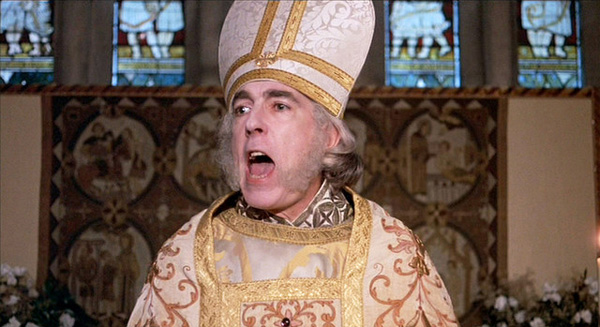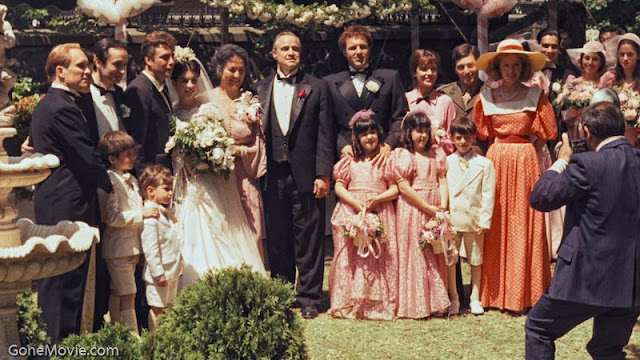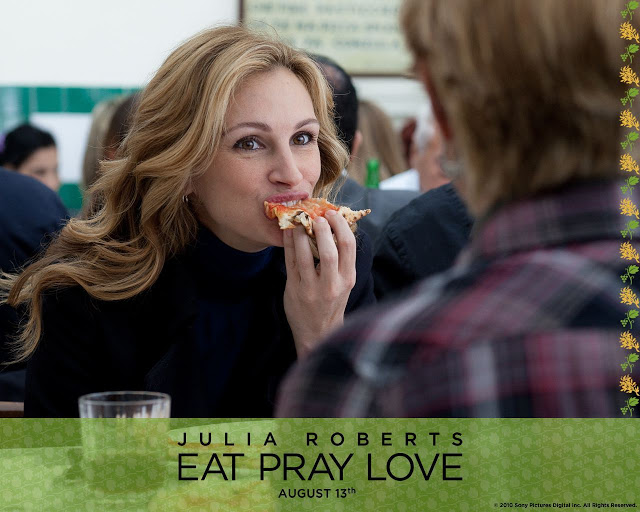This guest post by Marcela De Vivo appears as part of our theme week on Cult Films and B Movies.
What does it mean to change cinematic history? Is it The Wizard of Oz with its use of technicolor? Pulp Fiction with its refreshingly out-of-order timeline? Rashomon with its three POV’s? All of the above, and then some. Here are some game-changing cult classics, divided into handy genre sections. And while we’re looking at the influence of these cult films, why not check out how they portray and treat women? Almost entirely coincidentally, they’re all from the ‘80s. What can I say? It was a culturally rich period.
Film Noir: Blade Runner & Blue Velvet
Almost 70 years after its heydey, film noir is still a popular genre that continues to influence and revolutionize modern cinema. It’s everywhere — from the Keanu Reeves-helmed Matrix series to the femme fatale Black Widow in Joss Whedon’s blockbuster The Avengers. It’s touched many films over the last 70-odd years, including Blade Runner and Blue Velvet.
While at a first glance, Blade Runner seems like something of a misogynist film — two out of the film’s three major female characters die horribly violent and sexualized deaths — upon closer inspection, it reads more as a commentary on the outdated femme fatale trope. All three women in the film embody the femme fatale in some way — Pris convinces J.F. Sebastian to take her in with her sexuality and Zhora is able to disarm Deckard with her naked body before dressing in that infamous post-Star Wars metal bikini and clear rain coat.
Rachael, perhaps, fills the role to the fullest — acting as the morally questionable love interest. And though she’s the only one who makes it out of the film alive, she’s even treated to some violence at the hands of Deckard — their love scene is cringe-worthy: he throws her against the wall, bringing her almost to the point of tears, and orders her around in a sketchily S&M fashion.
While all of these strong women losing their agency to men may seem misogynist, we’re forgetting the setting: completely dystopic 2019. The mistreatment of women instead goes hand in hand with the mise en scéne: a world where a woman can fall through multiple plate glass windows after being brutally shot down in the street and no one bats an eye. Ridley Scott subverts the now-outdated femme fatale trope by making it a part of a post-apocalyptic world.
Blade Runner definitely made its mark on film history; it was one of the harbingers of the cyberpunk genre that emerged in the early 1980s. We can see its influences in everywhere from modern architecture to TV — in fact, it reportedly influenced the cult TV show Battlestar Galactica, and the architecture at the Getty Center in Los Angeles, most recently seen as Starfleet Academy in Star Trek Into Darkness. It was also notably listed as the second most influential visual effects films of all time — if you have an interest in photography or cinematography, you should definitely check this film out.
Blue Velvet, too, is a veritable can of worms when it comes to the treatment of women — it has some pretty serious virgin-whore dichotomy going on. Sandy and Dorothy? Blonde, cheerleader-adjacent daughter of the sheriff vs. French nightclub singer? Come on, Jeffery. However, unlike Blade Runner subverting femme fatale stereotypes all over the place, Blue Velvet has a decidedly more Freudian twist on its gender relationships. Dorothy/Frank/Jeffrey? It’s so creepily Oedipal and sado-masochistic that I don’t even want to go there. That’s not to say the film’s not worth watching; what it does with the concepts of voyeurism is fascinating, and of course, visually it’s spectacular.
Like Blade Runner, this was the work of an ultra-auteur, playing homage to a smorgasbord of genres. Noir, surrealism, horror? Check, check, and check. David Lynch’s famous cinematic style still has an influence on movies — the dreamy, nightmarish quality of his work is still majorly in play today. His famous and groundbreaking TV show Twin Peaks still has a huge influence as well — this mysterious TV show paved the way for shows like Lost and The X-Files.
And now for something completely different…
High School: Pretty in Pink & Heathers
Say what you will about Pretty in Pink — I still think Andie, played by Molly Ringwald, should have ended up with Duckie (Jon Cryer). I mean, that “Try a Little Tenderness” lip-sync? Pure gold. John Hughes’ oeuvre pretty much revolutionized the teen film genre. He was one of the first filmmakers to give the problems of teens actual weight. Instead of creating straight-up comedies and farces, his characters faced real problems, chief among them class. Pretty in Pink’s whole plot revolves around such issues — Andie’s dad has fallen into something of a depression after being left by his wife, and now Andie can barely get him out of bed, let alone to report to a real job. By treating teens like adults, Hughes created a crop of cult classics that teens and adults alike still enjoy nearly 30 years later.
Pretty in Pink was also somewhat ahead of its time in the Strong Female Character department, especially within its genre — Andie Walsh knows what she wants and she’s going to do her best to get it, no matter if she falters along the way. She lines up job interviews with for her dad, rebuffs her friend Duckie’s advances — she’s even not afraid to tell off the school’s resident asshole, Steff and she gets a lot of life advice from her awesome role model/friend/boss/fashion inspiration, Iona. She’s not the perfect character, but her authentic and genuine personality made her a role model to many young girls.
And what about the infamous Heathers? Sociopaths, nihilism, and bombs? Dark stuff. Released in 1988, this film is very much a contemporary of Pretty in Pink, and aside from being set in high schools, they’re about as different as two films could be. Heathers was interesting on many levels — the issues it dealt with in varying degrees of satire are still in play today. Plus, it featured a murderous anti-heroine, Winona Ryder, as Veronica Sawyer, who, at the end of the film, leaves her suicidal, sociopathic boyfriend to die, saving the whole school in the process.
What are your thoughts on the above films? What are some of your favorite cult films? Share your thoughts in the comments!
Marcela De Vivo is a freelance writer from Los Angeles and has written on a wide variety of topics from her favorite films to interior design tips. She loves watching her favorite female empowering films with her young daughter, Izzy, for a great girls’ only movie night and some much needed mom-and-daughter bonding time.
